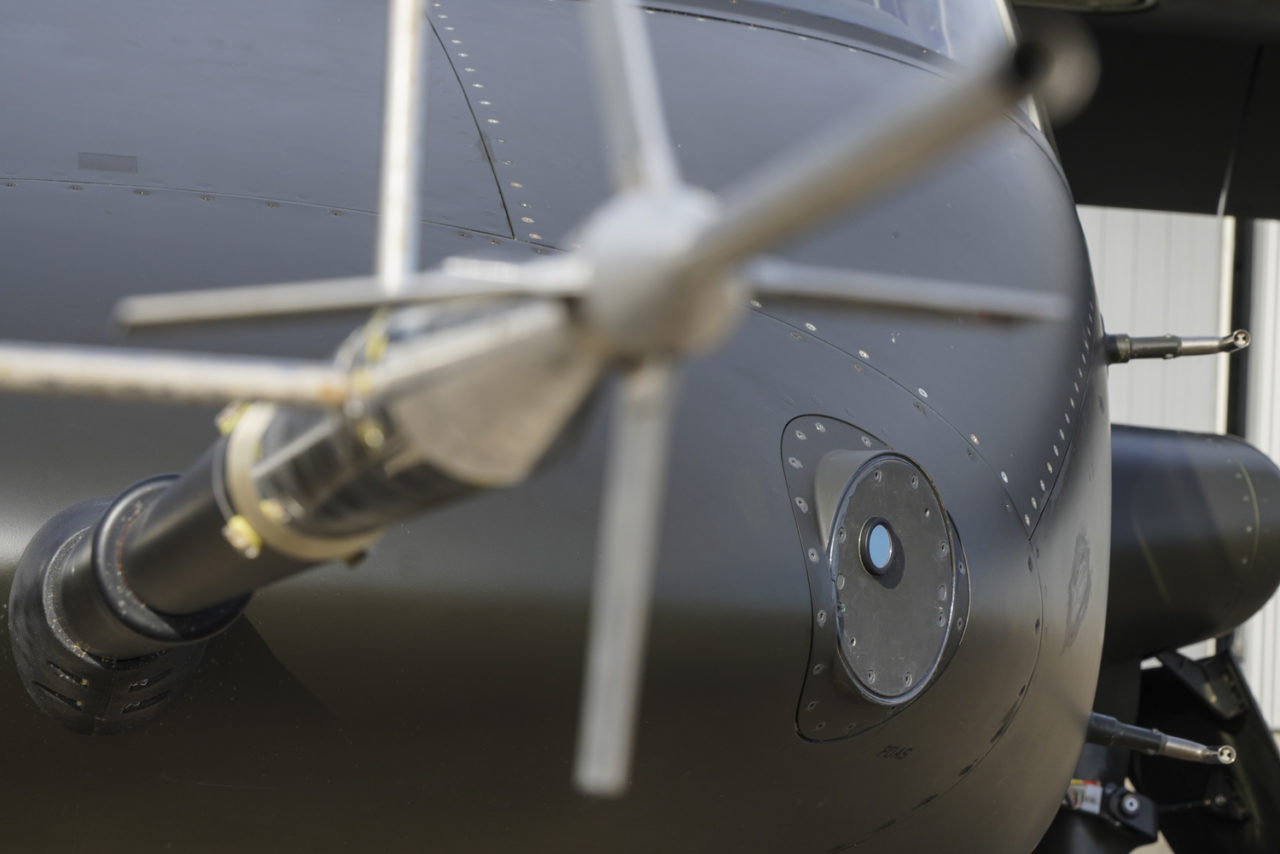
Lockheed Martin’s PDAS Sensor on a V-280 Valor. (Bell)
Lockheed Martin has flight tested its pilotage distributed aperture sensor (PDAS) on a Bell V-280 Valor.
PDAS is a multi-function sensor system for vertical lift aircraft that generates and fuses high-resolution, 360-degree real-time imagery with a goal reminiscent of the sensor suite and data fusion on Lockheed’s F-35. Ultimately working with the company’s multi-modal sensor fusion (MMSF) system, PDAS is intended to improve situational awareness for pilots and let them share that data.
In a series of flights over Fort Worth, Texas in March, Lockheed tested a version of PDAS that allowed the system to generate imagery for up to two users, but the goal is to increase that number to six. According to Steven Botwinik, director of sensors and global sustainment advanced programs for Lockheed, the proof of concept for that capability is already complete and the upgraded software to allow six users should be ready by 2020 test flights.
In addition to other pilots, the system can share environmental imagery with ground troops, support aircrews and provide additional data to mission commanders to inform decisions.
PDAS, Botwinik told Avionics International, features six MMSF-compatible infrared sensors distributed around the aircraft and linked to aircrew helmets and cockpit displays via open-architecture processors. The fusion system will integrate that infrared information with radar, lidar and visual sensor information as well as digital terrain elevation data. The latter is particularly important for when the V-280 or other aircraft are flying in GPS-denied areas to combine with inertial measurements to keep the aircraft’s position in space carefully tracked without the use of GPS.

The V-280 Valor. (Bell)
Lockheed will be looking to test additional capabilities over the next two years, according to Botwinik, such as a function that automatically identifies and tracks moving targets on the ground or in the air and a “point and scene track capability” that brackets items of interest that the user designates.
No specific times are set yet, but there could be a number of additional flight tests for the system coming in the near future after the first one last month.
“Conducting PDAS flight tests on the V-280 is an exciting first step toward delivering a level of situational awareness unavailable on today’s Army rotorcraft,” said Rita Flaherty, vice president of strategy & business development for Missiles and Fire Control. “With its embedded, multi-functional sensors, PDAS is the ideal foundation for an integrated survivability suite that will enable Army aircrews to own any environment and universally detect and defeat incoming threats.”